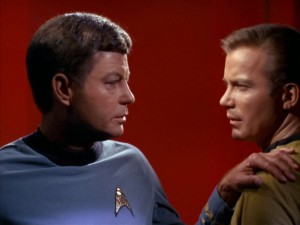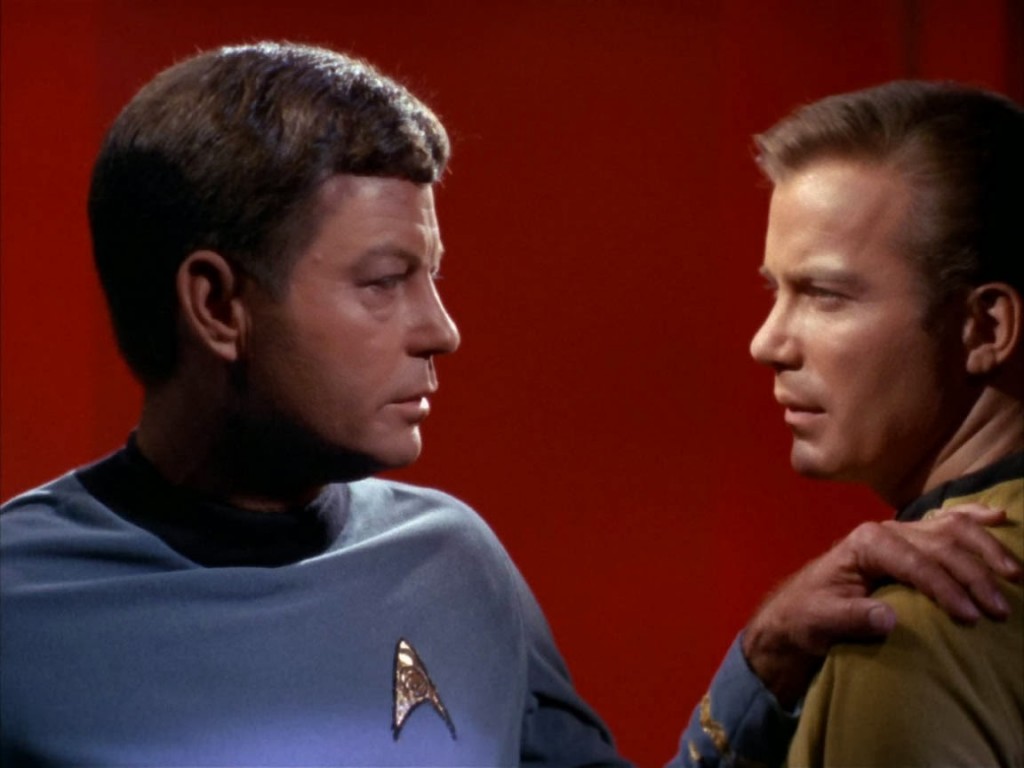Here are the stories we published that you liked the best in 2024. Some of them surprised us when they started getting gazillions of reads. Others didn't.
Posts published in “Potpourri”
This short story first appeared in the December 20, 2000 issue of the weekly entertainment print publication ESP Magazine. For the past 14 years it's become an annual Christmas tradition at FOSS Force.
In this trip down memory lane, we look back to the days when cutting edge technology came with vacuum tubes.
Days of Future Tech Passed

The first broadcast of FM stereo in North Carolina was on WMDE, an FM-only radio station in Greensboro. I’m guessing that the time was late 1961 or early 1962, as the FCC approved FM stereo broabdasts in April, 1961. Dad ordered the stereo generator as soon as they became available. I was there the night it was installed. I would have been 10 at the time.
The station was no more than a control room and transmitter room, that had been built by my father and one of his friends in the corner of a brick building that had been some sort of garage, but which my father had turned into a television repair shop when he bought the building in the early 1950s. In the control room, the walls and ceiling from about waist high were covered with white acoustic tiles, made of compressed fiber, with holes to absorb sound. The bottom half of the walls were plywood painted light lime green, with a strip of molding running along the seam at the bottom of the tiles. Like nearly all control rooms, there was no outside window.
The console desk, also built by Dad, was a backwards “C,” built deep and sat against the transmitter room wall. The console was a small Gates Studioette, bought new in 1956, which could mix from four sources. To expand its mixing capabilities, there were switches that the operator could use to take audio from additional sources and assign them a pot. It was a Gates, so it was well designed and built. Rek-O-Kut Rondine turntables with Gray hydrolic tone arms sat on each side of the operator.
Christine Hall has been a journalist since 1971. In 2001, she began writing a weekly consumer computer column and started covering Linux and FOSS in 2002 after making the switch to GNU/Linux. Follow her on Twitter: @BrideOfLinux
Open source is no longer just about the software that sits on your computer. Open methods are being used to develop everything from better automobiles to life altering medical devices.
The Video Screening Room
This inspiring short video from Red Hat, uploaded Monday to YouTube, suggests why open source methods can yield flourishing results.
If you’re an open source enthusiast, make sure you are subscribed to the Red Hat Videos YouTube channel to stay in the loop about future videos they upload. Maybe one of those videos will cover some open source project you’re working on. Also, ask yourself what youngsters do I know who would find this video to be inspiring. Share the link to this video with them and you will have planted a seed that could someday grow into a mighty oak.
For the past 10 years, Phil has been working at a public library in the Washington D.C.-area, helping youth and adults use the 28 public Linux stations the library offers seven days a week. He also writes for MAKE magazine, Opensource.com and TechSoup Libraries. Suggest videos by contacting Phil on Twitter or at pshapiro@his.com.
We were pleased to discover an online retailer that caters to Linux and FOSS users and seems to understand exactly what free and open source is all about. This company gives a percentage of each purchase to free tech projects.
Are you one of those people who likes to use your laptop as a billboard to announce to the world that you’re a Linux user? Do you feel compelled to plaster stickers all over the outside of your laptop, maybe even your luggage, letting everyone know your favorite distro, some of your favorite FOSS programs or even a favorite programming or scripting language? Do you find yourself wishing there was an easy way to cover up the Windows key on your PC’s keyboard with something that actually represents an operating system you use?
Christine Hall has been a journalist since 1971. In 2001, she began writing a weekly consumer computer column and started covering Linux and FOSS in 2002 after making the switch to GNU/Linux. Follow her on Twitter: @BrideOfLinux
We’re going to take the scenic route in getting to the point today. If you don’t want to wait, you can go down to the bottom where it says, “The moral of the story…” But the point of today’s exercise is that we in the decentralized FOSS realm are a creative bunch, and in that creativity is our strength.

The Starbucks in San Jose near James Lick High School seems to always be abuzz — kids from the school come in for coffee and other Starbucks treats, all the while being served by a quick and helpful staff, one of whom couldn’t stop talking in loud tones about his new opportunity in a nearby, more prestigious Starbucks.
The after-school high school crowd seems to be supplanted, eventually, by moms picking up their elementary school-aged children and bringing them to Starbucks. While I’m sitting in a way-too-comfortable chair, two girls walk up to me.
They stare. I look up, smile, and go back to work. I can still feel them staring at me.
One points and says, “elefante,” which is Spanish for “elephant.”
Eddie Baker is a 16 year old high school student and his family was one of our Reglue 12 Geeks of Christmas program recipients. Not only did he qualify for a computer, his family was qualified for help with Internet via our Prometheus Project. Eddie is a big guy. He’s well over six feet tall and goes a good 230 pounds. The stuff football linebackers are made of. Football is of no interest to Eddie. When he says so, he’s almost apologetic in the way he says it. Here in Texas, high school football is darned near a religion.
 He wants to study and work in the field of geology. Specifically, the archaeological wing of geology. Eddie wants to study things like the Cretaceous-Tertiary extinction. He wants to know more about what really happened in that time period. He wants to know how the molten rock and metals at our core generate a magnetic field that prevents us from being destroyed in a micro-second by a heartless, murderous universe.
He wants to study and work in the field of geology. Specifically, the archaeological wing of geology. Eddie wants to study things like the Cretaceous-Tertiary extinction. He wants to know more about what really happened in that time period. He wants to know how the molten rock and metals at our core generate a magnetic field that prevents us from being destroyed in a micro-second by a heartless, murderous universe.
Football is of no interest to Eddie. Eddie doesn’t care about games. He cares about contributing to the human condition in a positive way.
Ken Starks is the founder of the Helios Project and Reglue, which for 20 years provided refurbished older computers running Linux to disadvantaged school kids, as well as providing digital help for senior citizens, in the Austin, Texas area. He was a columnist for FOSS Force from 2013-2016, and remains part of our family. Follow him on Twitter: @Reglue
As computer technology races forward, with storage becoming cheaper and cheaper and machines becoming more powerful by the year, it’s odd that some things just don’t change. I am using a four year old computer with an Intel quad core processor at 2.4 gigs per, with 8 gigs of RAM, an Nvidia GTX660, and a 750 watt power supply. It runs great; it’s given me zero problems. And yes, I did build this machine but still…
 What reason do I have to upgrade? I spend a little time in some shooter games, getting my DNA reduced to gloppy puddles of goo. I work in Blender and Gimp just a bit and I do some low-level audio work via Audacity. From time to time I will find the need to fire up Eric IDE and do some low-level coding. Other than that I just browse, exchange emails and do my banking and parts ordering online. Add to that watching online entertainment and you have my computer use down.
What reason do I have to upgrade? I spend a little time in some shooter games, getting my DNA reduced to gloppy puddles of goo. I work in Blender and Gimp just a bit and I do some low-level audio work via Audacity. From time to time I will find the need to fire up Eric IDE and do some low-level coding. Other than that I just browse, exchange emails and do my banking and parts ordering online. Add to that watching online entertainment and you have my computer use down.
Ken Starks is the founder of the Helios Project and Reglue, which for 20 years provided refurbished older computers running Linux to disadvantaged school kids, as well as providing digital help for senior citizens, in the Austin, Texas area. He was a columnist for FOSS Force from 2013-2016, and remains part of our family. Follow him on Twitter: @Reglue
Friday FOSS Week in Review
Pretty fonts coming to Linux?
Most of us here at FOSS Force have been using various flavors of Linux for thirteen years or so. During that time we’ve gotten used to reading comments on the ugliness of fonts in Linux, especially when it comes to browsers.
We’ve never particularly understood this or noticed any homeliness in regards to Linux fonts. Of course, we’ve also never been able to understand reviewers who write about how unexciting they find fonts like Times New Roman or Ariel to be. In our experience, Hunter Thompson is brilliant and compelling no matter what font is being used to render his rants, while Tom Wolfe is a pompous ass, no matter how humble a typeface used to display his insufferable prose.










